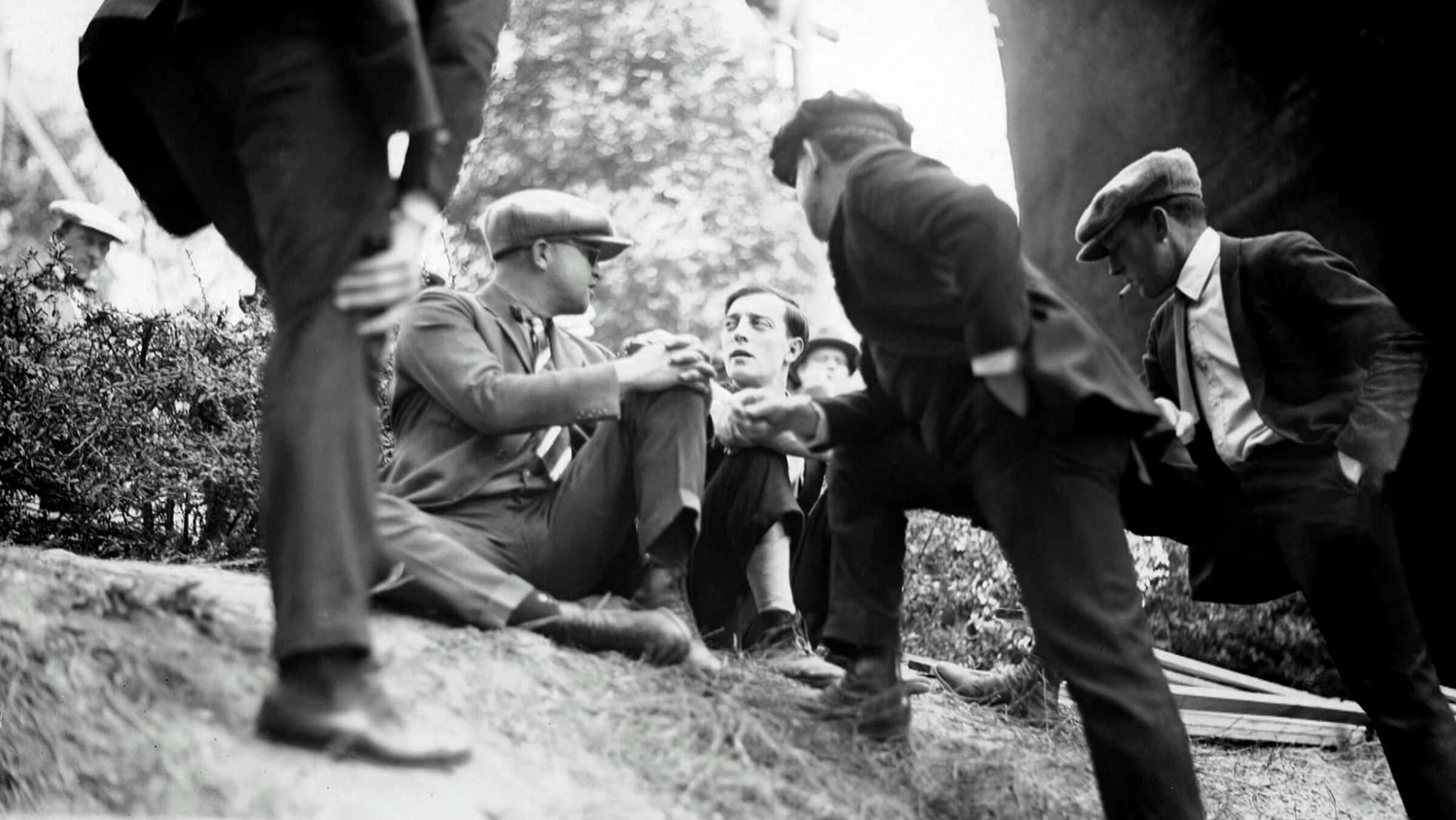This feature was published in conjunction with the screening of Three Ages at SFSFF 2023
Born in 1883 in a small town in Missouri, Elgin Lessley was the son of a Civil War veteran and a milliner. In his teens he developed a keen eye for still photography and in 1911 he became a cameraman for the American branch of the Méliès-Star Company. After a few years he was working for the legendary Keystone studio, filming shorts like He Did and He Didn’t (1916), starring Roscoe Arbuckle. Arbuckle started his own studio, Comique, where Lessley met the twenty-one-year-old Buster Keaton, then appearing in films for the first time. When Keaton made the leap to directing his own shorts in 1919, Lessley became his chief cameraman. Working on all nineteen of the comedian’s two-reelers and seven of his features, he was arguably one of the most essential members of Keaton’s talented crew.
ONE WEEK (1920)
The cinematography of Keaton’s first released solo short features many of the clean, precise compositions that he preferred. The numerous medium shots and long shots tended to be perpendicular to the action and gags were captured with an eye toward having as few edits as possible, or none at all. Lessley clearly had a pragmatic attitude toward working with the endlessly creative comedian, who might want the exterior of a full-sized spinning house captured one day and scenes of its chaotic, whirling interior the next.
THE PLAYHOUSE (1921)
Set in the type of vaudeville house that Keaton knew so well, this short is famous for its challenging trick shots featuring Keaton playing multiple roles—up to nine characters on screen at once. It was likely filmed with the strategic use of custom-cut mattes, the success of these shots depending in large part on Lessley’s impeccable sense of timing and his precise placement of the mattes behind the lens. Decades later Keaton told writer Rudi Blesh about the difficulty of capturing the minstrel show scene: “[Lessley] had to roll the film back eight times, then run it through again. He had to hand crank at exactly the same speed, both ways, each time. Try it sometime … He was a human metronome.”
THREE AGES (1923)
The multiple time periods of Keaton’s first feature presented their own filming challenges for Lessley, from working on camera platforms high over the Broadway tunnel in Los Angeles to conjuring special effects like the mighty Roman arena set, created by placing a hanging miniature in front of the lens so a 30-foot structure appeared 150 feet high. Also essential was Lessley’s patience when it came to Keaton’s insistence on capturing difficult gags in single shots, wanting audiences to see they were done “for real.” Reportedly the quick shot of Wallace Beery lobbing a rock at Keaton, who bats it straight back at Beery with a club, took a whopping seventy-six takes.
OUR HOSPITALITY (1923)
During an interview in Venice in 1965, Keaton mentioned Lessley always being on the alert for natural beauty while filming outdoor scenes: “He would go by the sun. He’d say, ‘I like that back crosslight coming in through the trees. There are clouds over there right now, so if we hurry up we can still get them before they disappear’… We took pains to get good-looking scenery whenever we possibly could ….” Today Our Hospitality’s cinematography is a much-admired highlight in Lessley’s portfolio, capturing the bucolic settings of early American landscapes and towns with confident grace. Shots of the Stephenson Rocket train making its wobbly way across the countryside may have inspired similar scenes shot by Dev Jennings for 1926’s The General.
SHERLOCK JR. (1924)
With Lessley’s flawless special effects showing Keaton jumping in and out of a movie screen, the reality-bending Sherlock Jr. is considered a technical masterpiece even today. According to Keaton, it was Lessley who suggested having the film’s most surreal gags take place within a dream sequence, keeping the main plot anchored in the real world. The shots of Keaton trapped inside the screen, with the scenery constantly changing around him in the blink of an eye, relied on Lessley keeping precise measurements of the distance from the comedian to the camera for each shot—down to a fraction of an inch.
THE NAVIGATOR (1924)
During the silent era, filming scenes underwater was challenging enough—and filming underwater gags was even trickier. To shoot the ship repair sequence, Keaton, Lessley, and assistant cameraman Byron Houck headed to crystal clear Lake Tahoe. Lessley and Houck were enclosed in a weighted, waterproof box packed with three hundred pounds of ice to keep the window fog free. The three of them could only stand to work in the frigid water for thirty minutes at a time. The results were highly praised, although Keaton ended up scrapping one elaborate gag involving a school of rubber fish, after it failed to get enough laughs at a preview screening.
THE CAMERAMAN (1928)
After a two-year sojourn filming Harry Langdon features, Lessley reunited with Keaton to film his first feature at MGM. Keaton had lost his independent status when executive Joseph Schenck sold his contract to the big-time studio and, in hindsight, greatly regretted the move. However, Keaton’s tenure at MGM did have a honeymoon period: the production of The Cameraman, for which he was allowed to assemble some of his former crew. Lessley’s smooth camerawork resulted in elegantly done sequences like Keaton running up and down several flights of stairs and a precarious stunt where Keaton cranks a tintype camera on a collapsing platform. The Cameraman was the last film the two men made together, the end of an era of thoughtful collaboration. The remainder of Lessley’s career was low-key, and records show that he worked sporadically as an uncredited second cameraman until his death from heart inflammation at age sixty.

